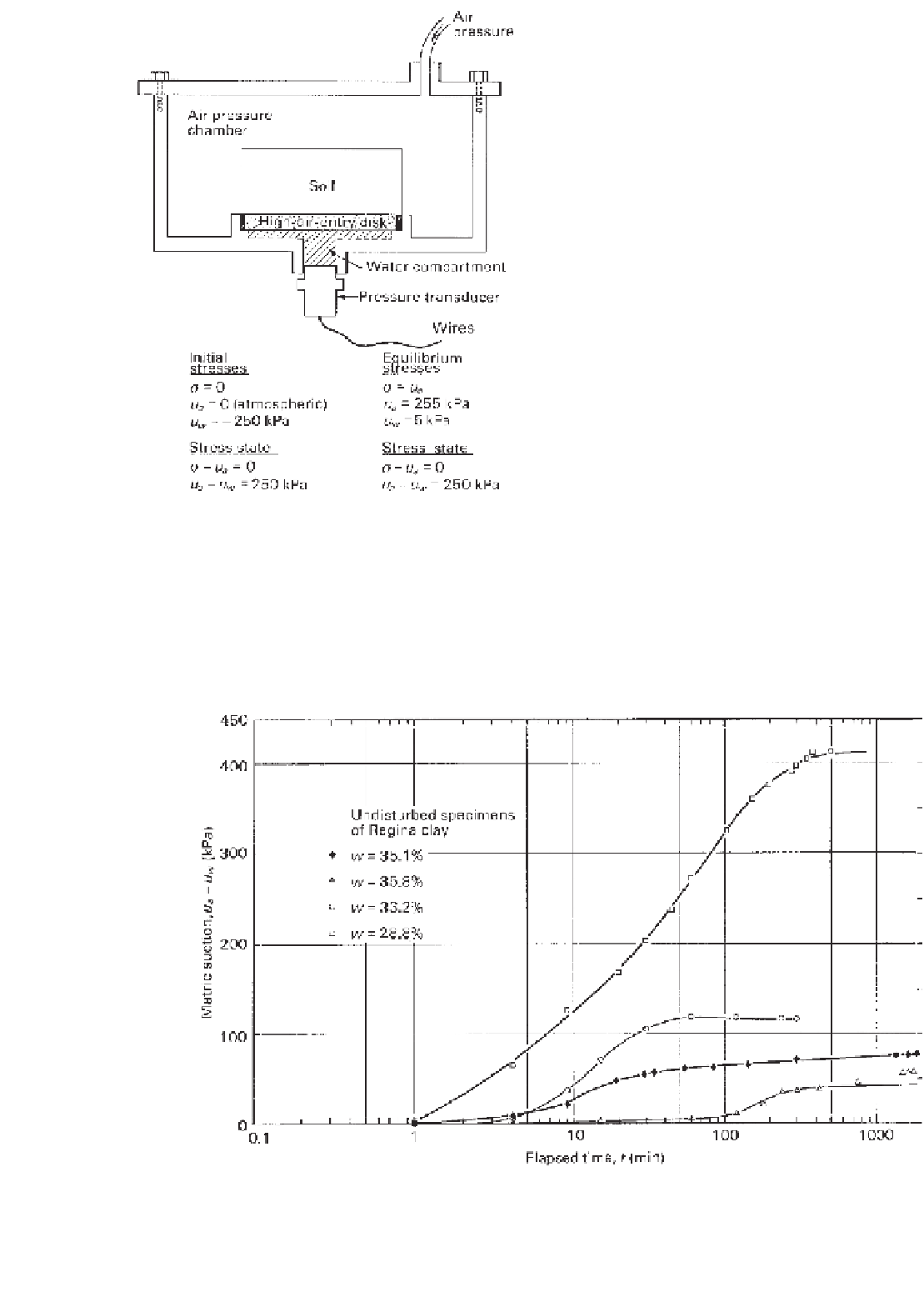Environmental Engineering Reference
In-Depth Information
immediately tend to draw water up through the ceramic
disk, causing the pressure transducer to commence regis-
tering a negative value. The cover must be quickly placed
on top of the device, and the air pressure in the chamber
can be increased until there is no further tendency for
the upward movement of water through the high-air-entry
disk. Let us assume that at equilibrium conditions the
chamber air pressure is reading 255 kPa, while the water
compartment
is registering 5 kPa. Therefore,
the matric
suction of the soil is 250 kPa (i.e., 255
250 kPa).
Typical response time curves when using the axis trans-
lation technique for the measurement of matric suction are
shown in Figs. 4.28 and 4.29 (Widger, 1976; Filson, 1980).
The response curves generally exhibit an S shape and a rela-
tively fast equilibration time. Pressure response versus time
is a function of the permeability characteristic of the high-
air-entry disk and the soil. The results shown in Figs. 4.28
and 4.29 were obtained when making matric suction mea-
surements on highly plastic clay (i.e., Regina clay).
Figures 4.30 and 4.31 present water content versus matric
suction relationships for compacted specimens of Regina
clay and glacial till, respectively. The matric suctions were
measured using the axis translation technique. Reasonably
good agreement and reproducibility in the measurement of
matric suction has been obtained by many researchers indi-
cating the reliability of the axis translation technique.
Similar water content versus matric suction relationships
were obtained for several compacted soil types by Olson
and Langfelder (1965), as shown in Fig. 4.32. Again, there
is a distinct relationship between decreasing water contents
and increasing matric suctions for as-compacted soils.
−
5
=
Figure 4.27
Pressure changes associated with measurement of
matric suction when using null-type pressure plate apparatus (from
Fredlund, 1989c).
Pressure values shown in Fig. 4.27 illustrate how highly
negative pore-water pressures can be measured when using
this apparatus. Let us suppose that a soil specimen has
an initial pore-water pressure of -250 kPa when placed
onto the saturated, high-air-entry disk. The specimen will
Figure 4.28
Matric suction response versus time for axis translation measurements on Regina








Search WWH ::

Custom Search